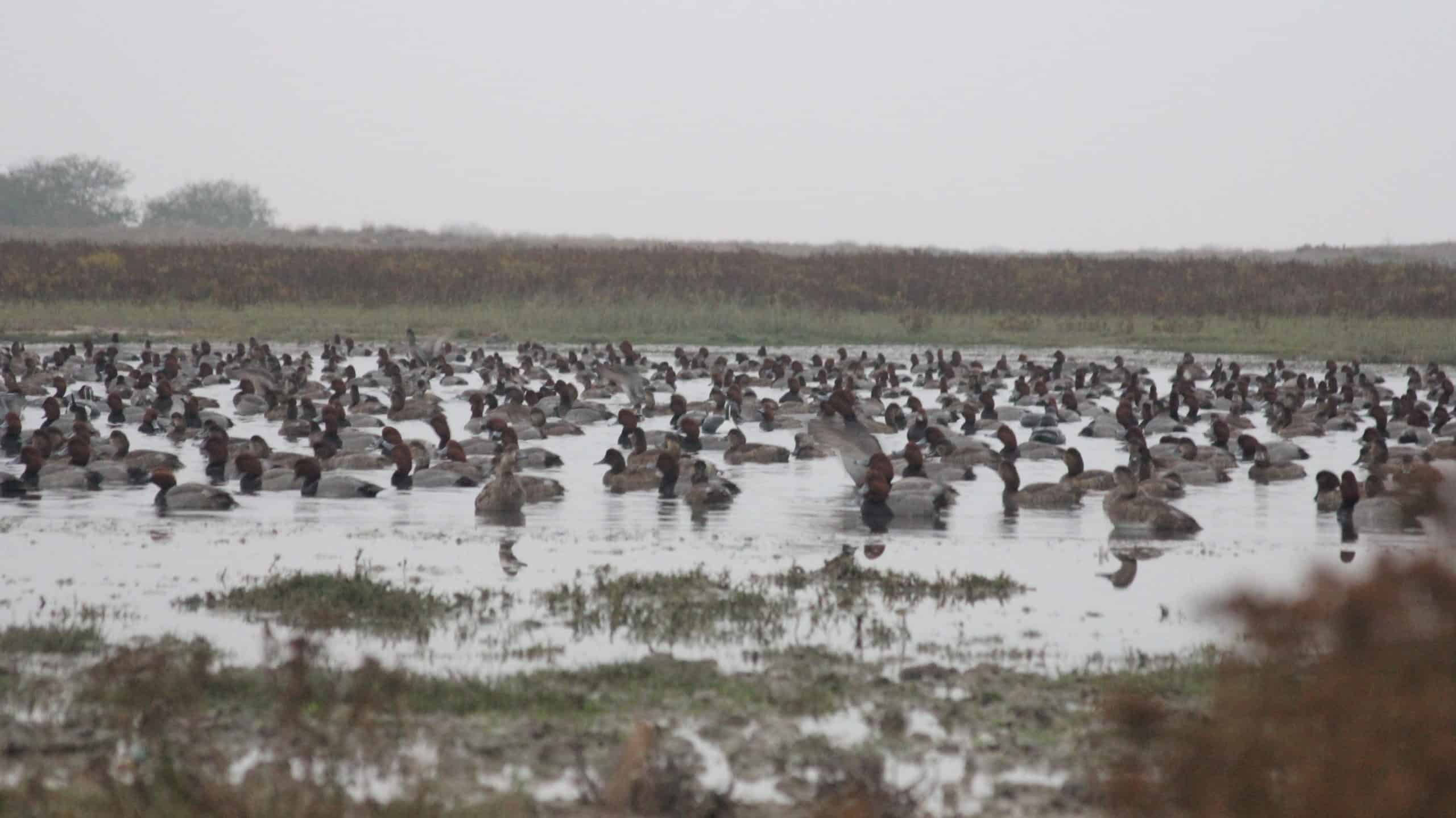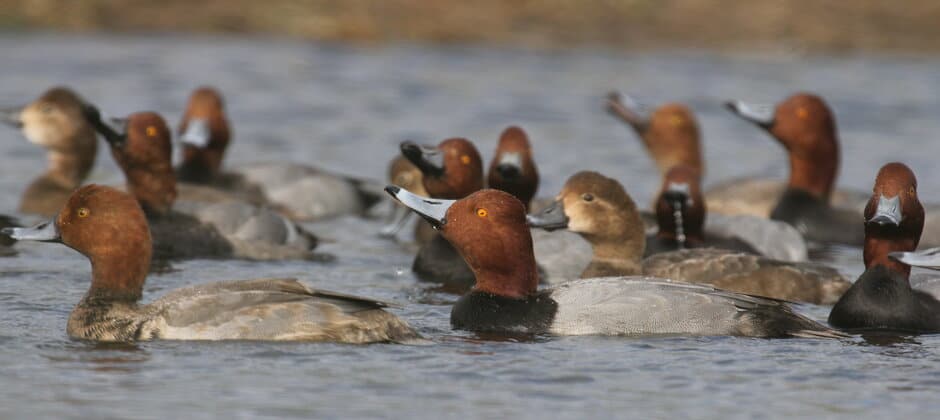Share this article
JWM: Water management can help redhead duck conservation
Every winter, several hundred thousand redhead ducks descend on the Laguna Madres of southern Texas and northeastern Mexico.
Redheads wintering in this area, which represent about 80% of the continental population, have some peculiar habits. They forage in the saline lagoons along the coast south of Corpus Christi, Texas on underwater shoal grass meadows. But their appetite for these plants means they also ingest a lot of saltwater. To reduce the salt concentration in their blood, the birds are driven off the coast in search of freshwater to drink.
The arid areas of southern Texas and northeastern Tamaulipas don’t provide much succor for the redheads (Aythya americana) other than a sparse collection of ponds.
“They typically come in to drink right after sunrise,” said Bart Ballard a professor of wildlife sciences at Texas A&M University-Kingsville. “They hit the water and feverishly drink for several minutes.”
During wetter years, this system works fine. But during dry years, many of these freshwater dry up. Since the ducks don’t regularly fly more than 10 kilometers from the coast in search of freshwater, they typically concentrate in certain areas of Laguna Madre nearby freshwater supplies. Large densities of ducks in concentrated parts of the coast overgraze the underwater grasses and leave the areas barren the following year.
Since redheads primarily winter along the Laguna Madre and rely mostly on shoal grasses, “they could be predisposed to catastrophe if something happened in this system,” Ballard said.
Redheads used to be more widely distributed across the continent, even spreading as far as the Chesapeake Bay. But over the decades, they have lost habitat, becoming more and more concentrated in the Laguna Madre region during the winter.

A dense flock of redheads in a freshwater pond. Credit: Bart Ballard
Ballard and his colleagues have been investigating the winter ecology of redheads for several years. They hope their research findings could be used to help encourage the redheads to spread out more through the Laguna Madre. In his research, he used aerial surveys to identify all the freshwater sources near the coast and helped determine how the system works and which ponds become unavailable during dry years.
In the recent study, published in the Journal of Wildlife Management, Ballard and his team analyzed this data to determine whether managers could strategically provide water during dry winters in some areas that would help the redheads spread out throughout the Laguna Madre to reduce localized overgrazing impacts on shoal grass meadows.
They identified 3,624 hectares of foraging habitat in the lower Laguna Madre that had no coastal ponds within the 10-kilometer radius that the ducks could fly to for freshwater. Those hectares represented 21% of all foraging habitat.
Ballard said that creating artificial ponds and drilling wells to pump water in these areas could help reduce stress on some parts of the Laguna by spreading the redheads out more.
“They aren’t picky as long as it’s a decent size trough close to the coast,” he said.
This article features research that was published in a TWS peer-reviewed journal. Individual online access to all TWS journal articles is a benefit of membership. Join TWS now to read the latest in wildlife research.
Header Image: Redheads quench their thirst on freshwater after foraging along the coast. Credit: Bart Ballard








